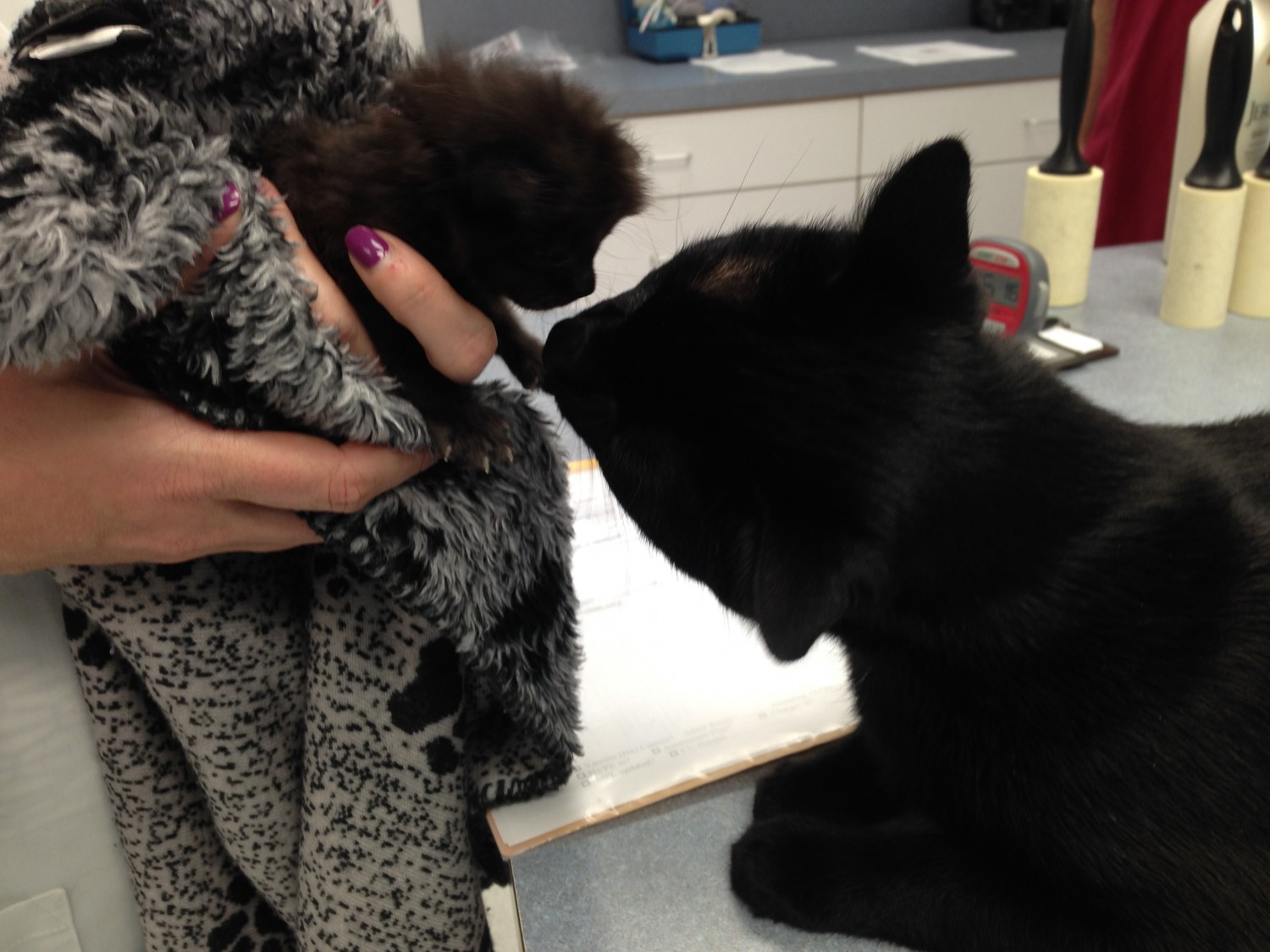- Home
- Career Opportunities
- About Us
- Services
- Resources
- Location
- Emergencies
Exclusively Cats Veterinary Hospital
(248)666-5287
www.ecats.vet
Introducing a New Cat
When bringing your new cat or kitten into the household, the adjustment period is often shorter and goes more smoothly if they are initially kept in a small area such as a bedroom or laundry room with their food, water and litter box. Make sure this room has been "cat proofed" by removing dangerous chemicals like bleach, poisonous plants, and that easily swallowed items such as string or thread are inaccessible.
After your new cat becomes acclimated to this area (a few hours for outgoing animals; a day or two if very shy), then allow them some freedom to roam the home for a few hours. If they seem stressed, put them back in their room to let them relax. Some cats may need to be transitioned over a few days, others will be ready to play and roam the house within 24 hours. Praise your new cat and speak to it softly. Do not expect that your new cat will be outwardly affectionate at first. Even the most loving cat may be nervous and initially hide or act aloof.
Introducing a new cat or kitten into a household that already has resident cats and dogs takes time and patience on everyone's part. The initial room that the new cat stays in needs to be a room that is not the favorite one of the current pets. If the litter box for the current cat is in the laundry room, then a spare bedroom or home office needs to be used for the new cat. If your current cat or dog sleeps in your bed , then do not choose that room to confine the new pet. After a day or two of confinement, try propping the door open enough that each pet can see each other, but not reach each other through the opening.You may also try putting the new cat in a carrier and placing it in the center of a room to allow the resident cat to approach and sniff the new cat without actual interaction. If your resident cat approaches with calm curiosity, offer some special treats to reward the friendly behavior.
You can also take bedding that each pet has slept on and switch it between rooms each day to help acclimate each cat to the other's scent. Some hissing and spitting is to be expected and rather than scold either cat for that behavior, wait until they are calm and praise that behavior. Cats respond much better to positive reinforcement than to negative reinforcement. Praise them for behavior you want to have them continue, such as tolerating the other cat in a room.
Make sure you give the current resident pets extra attention so they do not feel displaced in the household. Allow the current dog or cat to have the majority of your attention and let it sleep in its normal locations.
If introductions are not going smoothly, we recommend consulting with your veterinarian about your specific situation so that they can offer a personalized recommendation to help improve the relationship between your new cat and your resident cat.
We wish you an extraordinary relationship with your new cat! |






